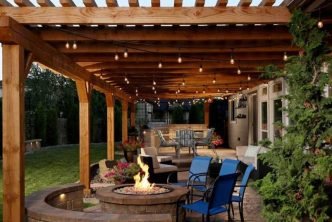When you think of home ownership, the architectural style plays a crucial role. Among the myriad of options, Quonset hut homes stand out as a unique choice. Originally designed for military use during World War II, these steel structures have evolved into a popular option for residential living.
But are they the right fit for your home plans? Let’s check the pros and cons to make an informed decision.
Table of Contents
Pros of Quonset Hut Homes:
When building a Quonset hut home, it’s essential to understand its advantages in a smart way of living. From cost savings to durability, these unique structures provide several benefits that make them an attractive option for potential homeowners. Let’s check them in detail:
1. Affordability
One of the biggest draws of Quonset hut homes is their cost-effectiveness. Compared to traditional housing, the upfront costs are significantly lower, making them an attractive option for budget-conscious homeowners.
Imagine a young couple, eager to build their first home without breaking the bank. They choose a Quonset hut home, finding that the cost is reduced by 30% with DIY construction. This affordability stems from the prefabricated nature of these homes, cutting down on labour and material costs.
2. Durability and Low Maintenance
Another significant benefit is the durability and low maintenance requirement of Quonset hut homes since steel is known for its strength and longevity. The resilience of steel makes these homes particularly suitable for areas prone to extreme weather.
Quonset huts can withstand harsh weather conditions, from heavy snow to strong winds, requiring minimal maintenance over time.
3. Energy Efficiency
Energy efficiency is a key feature of Quonset hut homes. The unique shape and structure of these buildings contribute to reduced energy consumption, an important factor for environmentally conscious homeowners. How?
The curved shape of Quonset huts allows for excellent air circulation, leading to better energy efficiency. This can translate into lower heating and cooling costs, a boon for both your wallet and the environment.
4. Quick and Easy to Construct
These homes can be assembled relatively quickly compared to traditional houses. The prefab nature of Quonset huts means most of the work is done off-site, speeding up the construction process. A small community project can construct a Quonset hut home within weeks.
Cons of Quonset Hut Homes
While Quonset hut homes offer several appealing benefits, it’s equally important to consider their potential drawbacks.
1. Limited Customization
While Quonset huts offer simplicity, this can also be a downside. The distinct semi-circular shape might limit your customization options, particularly in terms of interior layout and design. This shape constraints not only the placement of walls and divisions within the space but also affects how furniture and decor can be arranged.
As a result, homeowners looking for more conventional or varied interior designs might find this limiting, potentially impacting the overall aesthetic and functionality of the living space.
2. Insulation Challenges
Steel is a conductor of heat, making proper insulation crucial. Without it, you might face higher energy costs and less comfortable living conditions, especially in extreme climates.
This need for additional insulation can add to the initial cost and complexity of the building process. Furthermore, inadequate insulation can lead to issues like condensation inside the hut, potentially causing long-term maintenance challenges and affecting the durability of the structure.
3. Permit and Zoning Issues
Some localities have strict zoning laws and may not permit the construction of Quonset hut homes. It’s essential to check with local authorities before proceeding with your plans. Navigating these regulations can be complex, as they often vary significantly from one area to another.
In some cases, the unique structure and appearance of Quonset huts may not align with local architectural guidelines or community standards, potentially leading to lengthy approval processes or the need to seek variances.
4. Resale Value
Quonset homes are still a niche market. This uniqueness might pose challenges when it comes time to sell, as finding a buyer who appreciates this style could be more difficult. While their distinctive design appeals to a certain segment of homebuyers, it may not resonate with the broader real estate market.
This can affect not only the time it takes to sell the property but also the potential resale value, as the market for these homes is more limited compared to conventional housing.
What to Consider Before Buying a Steel Quonset Hut?
Let’s explore the essential things to consider before buying a steel Quonset hut as your home.
- Local Building Codes: Ensure you understand the local building codes and restrictions. This is key to avoiding legal issues down the line.
- Insulation Needs: Factor in the cost and type of insulation required for your climate. This is crucial for comfort and energy efficiency.
- Customization Costs: While the base structure is affordable, customizing your Quonset hut home to your liking can add up. Budget accordingly.
- Long-Term Plans: Consider your long-term plans. If you anticipate selling your home in the future, think about how the unique style of a Quonset hut might impact its marketability.
Quonset hut homes offer a unique blend of affordability, durability, and efficiency. However, they come with their own set of challenges, including customization limits and potential resale issues. Before making a decision, weigh these factors against your personal needs and preferences. With careful consideration, you can determine if a Quonset hut home is the right choice for your home plans.





